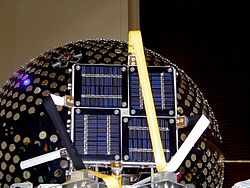AMSAT is a name for amateur radio satellite organizations worldwide, but in particular the Radio Amateur Satellite Corporation (AMSAT) with headquarters at Washington, D.C. AMSAT organizations design, build, arrange launches for, and then operate (command) satellites carrying amateur radio payloads, including the OSCAR series of satellites. Other informally affiliated national organizations exist, such as AMSAT Germany (AMSAT-DL) and AMSAT Japan (JAMSAT).
UoSAT-2, which is also known as UO-11 and OSCAR-11, is a British satellite orbiting in Low Earth Orbit. The satellite functions as an amateur radio transmitter and was built at the University of Surrey. It launched into orbit in March 1984 and remains orbital and active, though unstable with irregular periods of transmission. All of the Analog telemetry channels have failed, making telemetry from OSCAR 11 useless. The satellite was still heard transmitting telemetry in 2015, thirty years after launch.
In the 19th century, it was observed that the sunlight striking certain materials generates detectable electric current - the photoelectric effect. This discovery has laid the foundation of solar cells. Solar cells have gone on to be used in many applications. They have historically been used in situations where electrical power from the grid was unavailable.

A solar cell, or photovoltaic cell, is an electrical device that converts the energy of light directly into electricity by the photovoltaic effect, which is a physical and chemical phenomenon. It is a form of photoelectric cell, defined as a device whose electrical characteristics, such as current, voltage, or resistance, vary when exposed to light. Individual solar cell devices are often the electrical building blocks of photovoltaic modules, known colloquially as solar panels. The common single junction silicon solar cell can produce a maximum open-circuit voltage of approximately 0.5 volts to 0.6 volts.
CUTE-1.7 + APD or CO-56 (Cubesat-Oscar-56) or just OSCAR 56 was an amateur radio satellite in the form of a double CubeSat. The satellite used commercial off-the-shelf components extensively, in particular, it used the Hitachi NPD-20JWL PDA as a control computer, and it used a USB hub for sensor communications. At the end of its mission, the satellite was supposed to deploy an electrodynamic tether to help it deorbit. The satellite failed early into its mission, so the electodynamic tether experiment probably did not happen. It was launched on February 21, 2006 on board a Japanese launcher M-V.

Spacecraft operating in the inner Solar System usually rely on the use of photovoltaic solar panels to derive electricity from sunlight. Outside the orbit of Jupiter, solar radiation is too weak to produce sufficient power within current solar technology and spacecraft mass limitations, so radioisotope thermoelectric generators (RTGs) are instead used as a power source.

The STARSHINE series of three artificial satellites were student participatory missions sponsored by the United States Naval Research Laboratory.
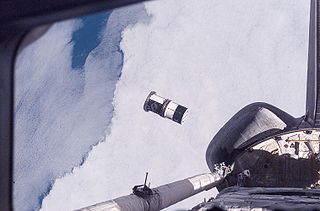
The Atmospheric Neutral Density Experiment (ANDE) is an experiment using two spherical satellites to measure the effects of atmospheric drag on spacecraft. ANDE is part of the Space Test Program of the United States Department of Defense, and was deployed in September 2006 from the Space Shuttle Discovery.
The United States Naval Academy (USNA) Small Satellite Program (SSP) was founded in 1999 to actively pursue flight opportunities for miniature satellites designed, constructed, tested, and commanded or controlled by Midshipmen. The Naval Academy's aerospace laboratory facilities are some of the most advanced and extensive in the country. These facilities include structures labs, propulsion and rotor labs, simulation labs, wind tunnels with flow velocities ranging from subsonic to supersonic, computer labs, and the Satellite Ground Station. The SSP provides funds for component purchase and construction, travel in support of testing and integration, coordination with The US Department of Defense or National Aeronautics and Space Administration (NASA) laboratories or with universities for collaborative projects, and guides Midshipmen through the Department of Defense (DoD) Space Experiments Review Board (SERB) flight selection process.
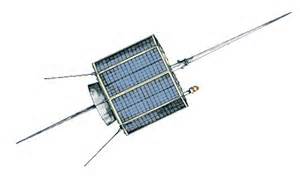
AMSAT-OSCAR 7, or AO-7, is the second Phase 2 amateur radio satellite constructed by the Radio Amateur Satellite Corporation or AMSAT. It was launched into Low Earth Orbit on November 15, 1974 and remained operational until a battery failure in 1981. Then after 21 years of apparent silence, the satellite was heard again on June 21, 2002 – 27 years after launch. At that time the public learned that the satellite had remained intermittently functional and was used surreptitiously for communication by the anticommunist opposition Fighting Solidarity during the martial law in Poland.

Concentrator photovoltaics (CPV) is a photovoltaic technology that generates electricity from sunlight. Unlike conventional photovoltaic systems, it uses lenses or curved mirrors to focus sunlight onto small, highly efficient, multi-junction (MJ) solar cells. In addition, CPV systems often use solar trackers and sometimes a cooling system to further increase their efficiency.
An amateur radio satellite is an artificial satellite built and used by amateur radio operators. It forms part of the Amateur-satellite service. These satellites use amateur radio frequency allocations to facilitate communication between amateur radio stations.

OSCAR II is the second amateur radio satellite launched by Project OSCAR into Low Earth orbit. OSCAR II was launched June 2, 1962, by a Thor-DM21 Agena B launcher from Vandenberg Air Force Base, Lompoc, California. The satellite, a rectangular box weighing 10 kg (22 lb), was launched as a secondary payload (ballast) for Corona 43, the fifth launch of a KH-4 satellite.

OSCAR 3 is the third amateur radio satellite launched by Project OSCAR into Low Earth Orbit. OSCAR 3 was launched March 9, 1965 by a Thor-DM21 Agena D launcher from Vandenberg Air Force Base, Lompoc, California. The satellite, massing 15 kg (33 lb), was launched piggyback with seven United States Air Force satellites. Though the satellite's active life was limited to sixteen days due to battery failure, OSCAR 3 relayed 176 messages from 98 stations in North America and Europe during its 274 orbit life-time -- the first amateur satellite to relay signals from Earth. As of 2021, it is still in orbit.

OSCAR IV was the fourth amateur radio satellite launched by Project OSCAR and the first targeted for Geostationary orbit on 12 December 1965. The satellite was launched piggyback with three United States Air Force satellites on a Titan IIIC launch vehicle. Due to a booster failure, OSCAR 4 was placed in an unplanned and largely unusable Geostationary transfer orbit.
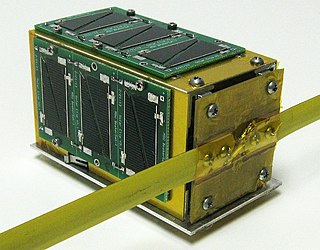
$50SAT is an American amateur radio communications satellite. It was launched on November 21, 2013 with a Dnepr launch vehicle from the Dombarovsky Air Base, in Orenburg, Russia.
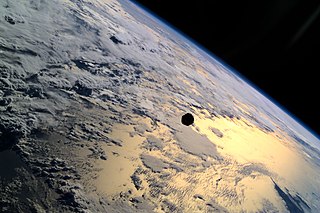
PANSAT was an amateur radio satellite. It was launched by Space Shuttle Discovery during the STS-95 mission as part of the third International Extreme Ultraviolet Hitchhiker (IEH-3) mission, on 30 October 1998 from Kennedy Space Center, Florida.

SAPPHIRE was a satellite built by the Stanford University students in Palo Alto, California.

Starshine 3 is one of five satellites in the Starshine project.
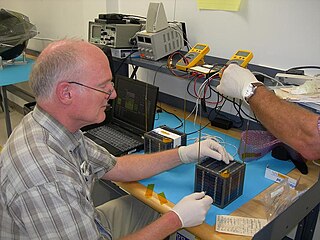
Radar Fence Transponder was an amateur radio satellite that was developed and built for training purposes at the United States Naval Academy. The 3 kg (6.6 lb) heavy RAFT had a cubic structure of 12.7 cm (5.0 in) edge length and therefore did not meet the Cubesat standard. Solar cells on all six sides of the satellite were used to supply energy. It had neither position control nor drive systems.
